#french renaissance
Text

Apotheosis of Saint Ignatius
A 300-year-old fresco by Andrea Pozzo.
The entire ceiling is flat.
#andrea Pozzo#renaissance art#renaissance painting#ceiling art#french renaissance#french art#french renaissance art#wall painting#Italian art#italian artist#italian painting#italian painter#quadratura painting#jesuit church of st. ignazio#roman art#roman architecture#roman painting#ethereal#classic literature#classic art#15th century#ascention#christian art#chritianity#christian faith
324 notes
·
View notes
Photo




Woodlands Vale, Ryde, Isle Of Wight,
Courtesy: Winkworth
#art#design#architecture#isle of wight#ryde#woodlands vale#countryhouse#luxurylifestyle#luxuryhouses#luxuryhomes#luxury houses#queen victoria#style#hisstory#winkworth#french renaissance#victorian#teulon
389 notes
·
View notes
Text
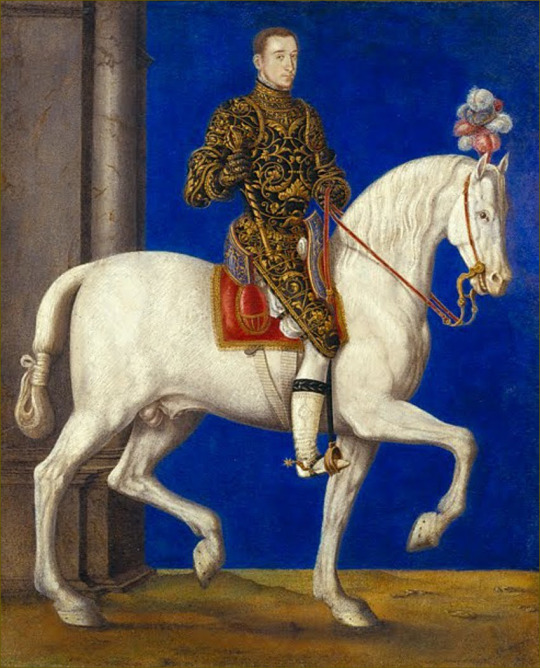
Equestrian Portrait of Dauphin Henri II, François Clouet, ca. 1543
#art#art history#Francois Clouet#portrait#portrait painting#equestrian portrait#French Renaissance#French art#16th century art#gouache#gouache on parchment#Menil Collection
140 notes
·
View notes
Text
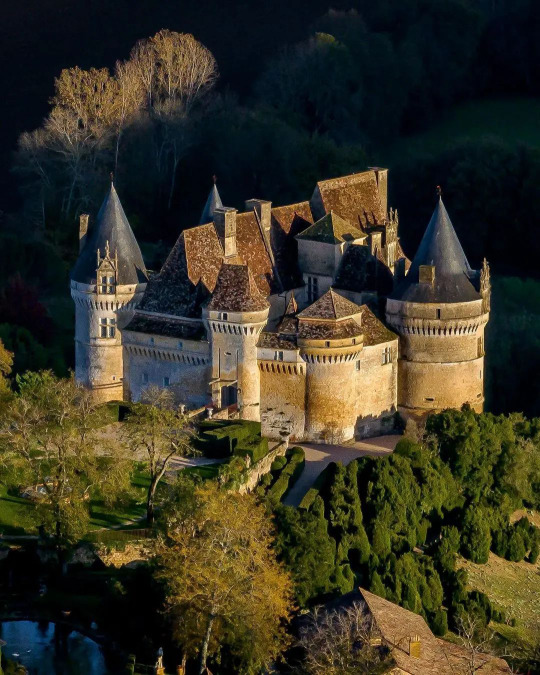
Château de Bannes, Dordogne, France. Rebuilt between 1510-1515 on the site of an older castle, which had been largely dismantled during the Hundred Years’ War. Today it is privately owned.
13 notes
·
View notes
Text
The outrageous, extravagant, often humorous, and sometimes beautiful outfits worn by the subjects of old portraits.
Francis I — Fashion Influencer
François I was a fashion-forward monarch. He was fond of dressing in the latest, most lavish clothing, made from the finest fabrics and adorned with elaborate details of beading, gold and silver thread embroidery, and gems. He worked with his favorite designers to create elegant, bespoke garments.

François I • Jean Clouet • c. 1530
Francois was a Renaissance influencer who brought the latest fashions to his court at Fountainblu, including "slashing" (more on that in an upcoming post), collars, and the codpiece.
Above, he wears a wide-necked doublet with paned sleeves under dark gold jerkin and a satin overgown with turned-back sleeves. His shirt has a tiny frill edged in black at the neck and wide ruffles at the wrist.
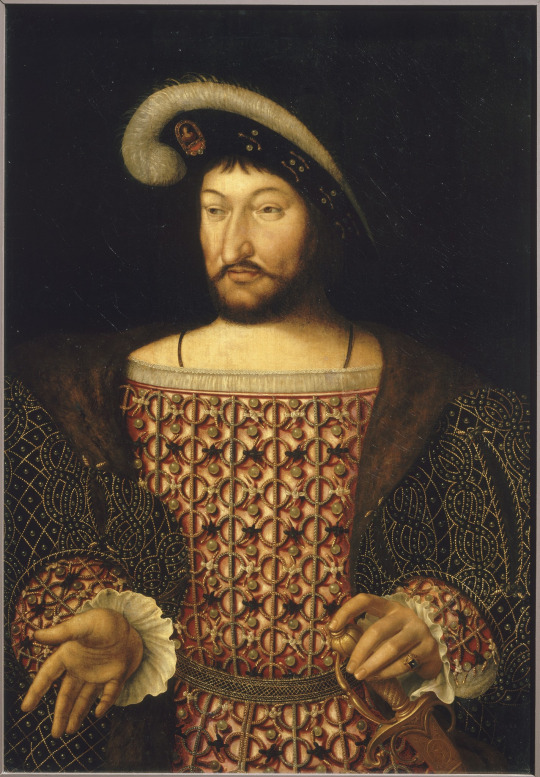
The Workshop of Joos Van Cleve (1480 or 1490 (ca.) – 1540 or 1541) • Oil on wood applied to the canvas • Château de Fontainebleau, Gallery of Splendours.
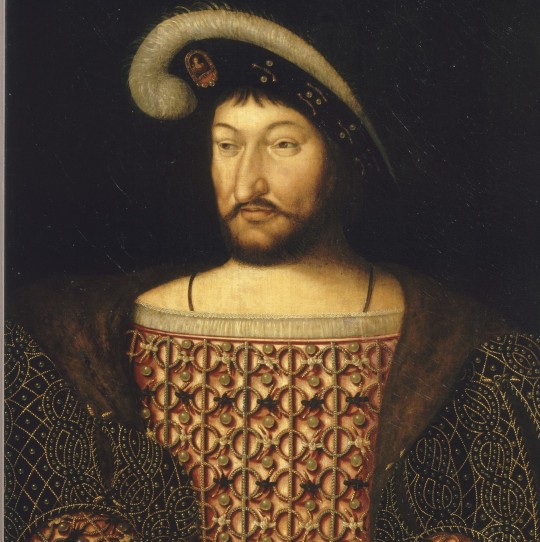
François I (Detail)

François I (Detail)

Besides being exquisitely dressed, and perhaps more importantly, Francis I was a great patron of Renaissance architecture and art. During his reign, he built or rebuilt numerous châteaus, including the Louvre in Paris and the magnificent royal residence at Fontainebleau. The king invited the Italian master Leonardo da Vinci to settle in France, and the artist spent his last years there. Francis also collected art works by Renaissance masters such as Raphael, Michelangelo, Titian, and Benvenuto Cellini. His collection of art, including a famous portrait of the king by Titian, became the core of the Louvre museum.
#portrait#art#painting#royal portraits#court portraits#françois I#french king#da vinci#jean clouet#french renaissance#art history#historical portrait#the resplendent outfit#tudor history#fashion history#royal fashion#17th century portraits#history of fashion#fontainebleau#musée du louvre
18 notes
·
View notes
Text
“Catherine [de’ Medici] sat by Henry’s bedside as he died. In the strangest of marriages, she had genuinely loved her husband. After they closed the king’s eyes, Catherine adopted a broken lance as her emblem: Henry’s lance and perhaps also her own—the heavy lance of a good wife, of complete devotion to a husband who had never loved her as much as she wished…Catherine put on her mourning clothes—not the white usually worn in France but hues of her black, like widows wore in Italy. Except on two occasions—the weddings of her sons—for the rest of her life she wore no other color.” - young queens, leah redmond chang
7 notes
·
View notes
Text
I made a post about it a long time ago: there is a cyclical phenomenon in the world of literature where suddenly you have a massive rise in popularity and appreciation of "behemoth-novels", and then it is rejected just as hard because everybody gets bored by it and wishes for something simpler and smaller.
I'll explain. I was thinking about the trend born at the turn of the 21st century, to not just make a fantasy book, or a fantasy trilogy, as it was usually the case until now, or just a series of short stories and novellas, but rather grow massive series of very thick novels by the dozen. And how, in return, it caused an immense love, appreciation and admiration for these "behemoth-sagas", these enormous series that have as much pages and characters as the Bible, takes decades to be completed, and that you can't possibly hold in your arms even if you use both. Doing just one petty little fantasy novel was seen as a kid playing in a sandbox - while the big boys and big girls did big books. This trend was followed by the rise in popularity and glory of hard worldbuilding in fantasy - and I am not speaking of "condensed hard worldbuilding" a la Tolkien, no I am speaking of expensive, if not hyper-expensive, hard worldbuilding.
You know the series I am talking about. The "door-stoppers", the "table-holders", these series where you are told by fan "You must REALLY commit to the thing". Robin Hobb's sagas ; The Wheel of Time ; A Song of Ice and Fire ; the Sanderson book series - well, you know the kind of "mega-fantasies".
Now, while these series are still considered classics and landmarks of fantasy, they are falling in disfavor due to people discovering or rediscovering the joys of simpler fantasy stories, of fantasy trilogies, duologies or even stand-alone novels. It is not a complete shift, as you still find a lot of advocates and defenders of the "mega-sagas" of fantasy - but this was the starting point of my thought about the cycles of literature.
Because this whole shift of balance in English-speaking fantasy literature (a shift that did not exist in French-speaking fantasy since French authors are not keen on mega-sagas and are more into single novels to trilogies) ; this whole shift, from a French person's point of view, happened already. Many times before.
France is known as one of the big literature countries. We are the land of the books! And of the authors! And of the harsh critics! As such it is very easy to pick up quick summaries and overviews of French literature as a whole (and by extension European literature, but since I am French I'll focus on French stuff) - and when you do that, you see the exact same cycle happen. We call them by many names: "romans-fleuves" (river-novels), "romans-sagas", (saga novels), we call them cycles and frescos and monuments ; but they keep returning every one or two centuries, they become all the fashion and all the trend and all the fad, and then the hype dies out and they are rejected for being too heavy, too big, taking too much place on the shelf, and instead of bloated, obese literature, people turn to skinny novellas and slender stories.
The oldest clear manifestation of this phenomenon in French literature is without a doubt the first part of the 17th century. The 17th century opened with the creation of some of the biggest and longest novels there ever was in French literature - and people LOVED it. They were the bestsellers, they were what everybody talked about, they were the model everybody referenced and followed. The most famous of them was "L'Astrée" by Honoré d'Urfé, one of the monuments of 17th century literature - one novel published over 20 years. Because it is divided into six parts... these six parts are composed of forty stories... and these stories are told over sixty books. Another famous example is the Scudéry siblings "Artamène ou le Grand Cyrus", which still holds the title of longest novel of French literature, with the record of over 2 100 000 words published over four years.
These novels defined the trends and culture of 17th century literature and yet... Nobody knows them today. They are not taught about in school. You ask a random French person on the street, they never heard about it. They haven't been published since centuries due to their enormous size - and even if they get reprinted today, it is only in professional, annotated editions for study. Because by the turn of the 17th century, the enormousness and "constant flow" of those river-novels tired out and bored the same readers that had hyped it up - and the next generations of writers came up in return with the first "true" novellas and short novels of French literature, which became massive hits overshadowing the river-novels as "has-beens", and unlike the Astrée or the Grand Cyrus which fell into oblivion, they are still being taught about as early as middle school: La Princesse de Clèves for example. This was also by the end of the 17th century that the genre of the fairytale knew a true boom and became all the trend: Perrault's fairytales for example, which are literaly one of the founding parts of French culture today.
But this entire phenomenon repeated itself in the 19th century! Because when you think of the monuments of the 19th century literature in France, you think of two mega-sagas that have nothing to envy to today's fantasy-behemoths. On one side, Balzac's Comédie Humaine, on the other Zola's Rougon-Macquart. Just like the fantasy behemoths, they are enormous ensemble of novels sharing a same universe (the Comédie Humaine is a set of 48 novels and just as much short stories all happening in parallel, at the same time, in neighboring areas ; the Rougon-Macquart cycle is made of twenty novels detailling a family's adventures throughout generations). Just like these fantasy behemoths, they also have a great care of realism and "hard worldbuilding". Zola was the "pope of naturalism" (the hardcore branch of realism), and his books were so thoroughly researched and so faithful to reality they are still used by historians today ; while Balzac delved much more into fantasy and supernatural and mysticism, he also was one of the great realist authors, who made sure his novels were coherent with each other, took care to depict the real-life cities and landscapes of his time, and through his work he intended to paint the most exact portrait (or caricature) of the society of France, of its classes and archetypes, as sort of gigantic fictionalized documentary. And just like the fantasy behemoths, they are now landmarks of literature considered classics of the canon.
... And just like them, while they are great classics and admired models, people also complain about the books being too thick, about there being too many characters, of the novels taking up all the shelves, and conclude that trying to get involved into these constructed universes is just losing your time.
The only difference between these two literary monuments and the fantasy-behemoths (outside of the fact one is fantasy the other is not... Even though Balzac included supernatural stories and "fantastique" elements in his Comédie humaine) is that the fantasy-behemoths tend to be one enormous series that never end but tells one core story around a given core of characters. Balzac and Zola's ensembles are rather a set of independant novels that can be read as stand-alones, but that have recurring characters, references to events happening in other stories, and form when put together a greater whole (the Rougon-Macquart cycle especially since it tells the story of one family from its beginning to its end).
I honestly don't have any point with this. There was no goal for this thought experience - I just wanted to point out how the enthusiasm and borderline fanaticism for "mega-fantasies" recalls these enormous projects of the like of Balzac and Zola, and the forgotten successes of the river-novels of the 17th century. Literature is a cycle that keeps repeating itself...
#literature#fantasy#fantasy series#worldbuilding#hard worldbuilding#book series#french literature#realism#zola#balzac#l'astrée#scudéry#french renaissance#nineteenth century#19th century#france
4 notes
·
View notes
Text

Hôtel de Ville, Compiegne (Oise), France. Flamboyant Gothic dating back to 1530. Taken on: December 14th, 2017 (iPhone SE)
#hdr#europe#architecture#pic for sale#compiegne#oise#france#northern france#flamboyant gothic#french renaissance#hautsdefrance
18 notes
·
View notes
Photo





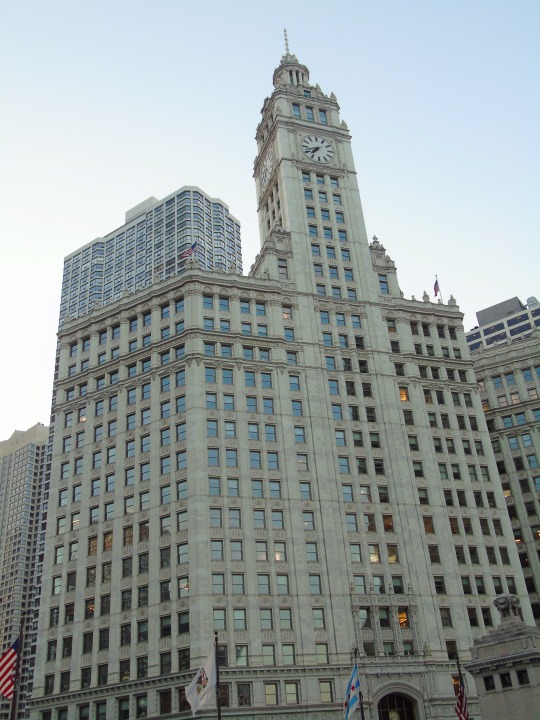



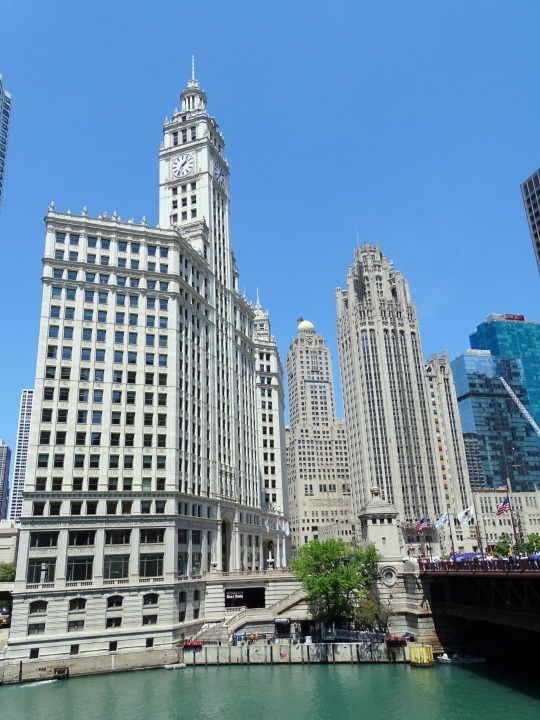
The Wrigley Company was founded in Chicago on April 1, 1891.
#Wrigley Company#founded#1 April 1891#anniversary#US history#USA#410 N. Michigan Ave#Graham Anderson Probst & White#Magnificent Mile#Near North Side#French Renaissance#architecture#cityscape#daylight#evening light#light and shadow#façade#exterior#Chicago#Illinois#travel#summer 2019#2016#vacation#Midwestern USA#Great Lakes Region#Chicago River#DuSable Bridge#Michigan Avenue Bridge
5 notes
·
View notes
Text



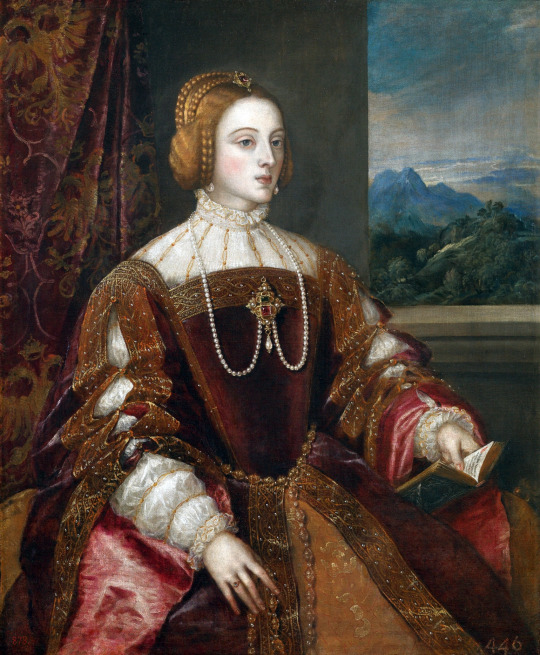



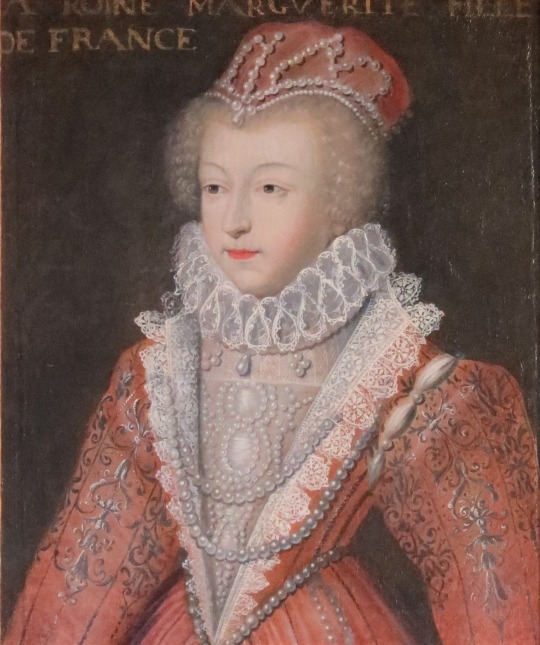


Renaissance European Queens:
Isabella of Castile - Elisabeth de Valois
Juana of Castile - Isabella of Portugal
Elizabeth I - Mary Queen of Scots
Eleanor of Austria - Marguerite de Valois
Marie de Médicis - Marguerite de Navarre
#renaissance#french renaissance#queen of france#queen of spain#house of valois#isabella of castile#mary queen of scots#elizabeth i
16 notes
·
View notes
Text
It's French Renaissance Literature time
It's French Renaissance Literature time. Yes, French Renaissance Literature, from the French Renaissance time period, whose literature it is now time to read.
#french renaissance#renaissance literature#french literature#literature#french#renaissance#french renaissance literature#it is time
0 notes
Text
"Lend yourself to others, but give yourself to yourself."
Michel de Montaigne - Philosophers of the French Renaissance - 1533-1592
#quoteoftheday#quotes#quotesoftheday#quotes of tumblr#life quotes#inspirational#life quote#philosophy quotes#philosophy#michel de montaigne#French renaissance#french
0 notes
Text
youtube
short biography on pierre de ronsard
0 notes
Text

Portrait of Francis I of France, unknown artist (French School), ca. 1530
#art#art history#portrait#portrait painting#Francis I#France#French School#French Renaissance#French art#16th century art
78 notes
·
View notes
Text
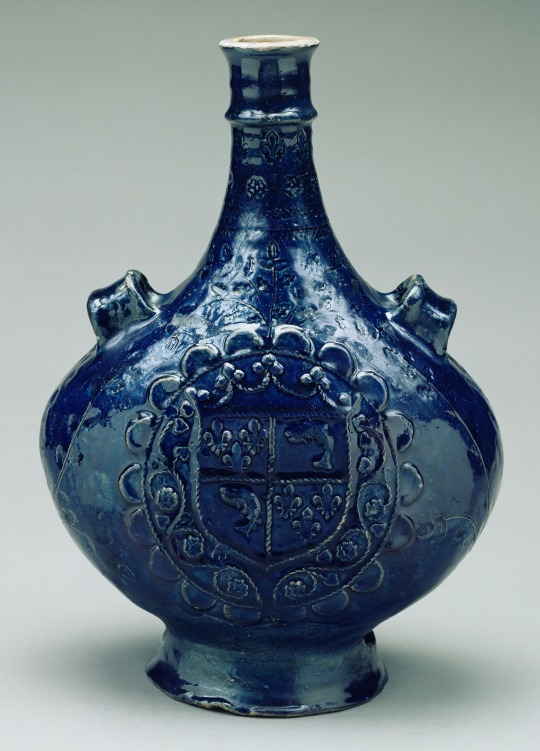
Cobalt-glazed stoneware pilgrim flask with the coat-of-arms of the Dauphiné, French (Puisaye, Burgundy), early 16th century
10 notes
·
View notes
Text

1 note
·
View note